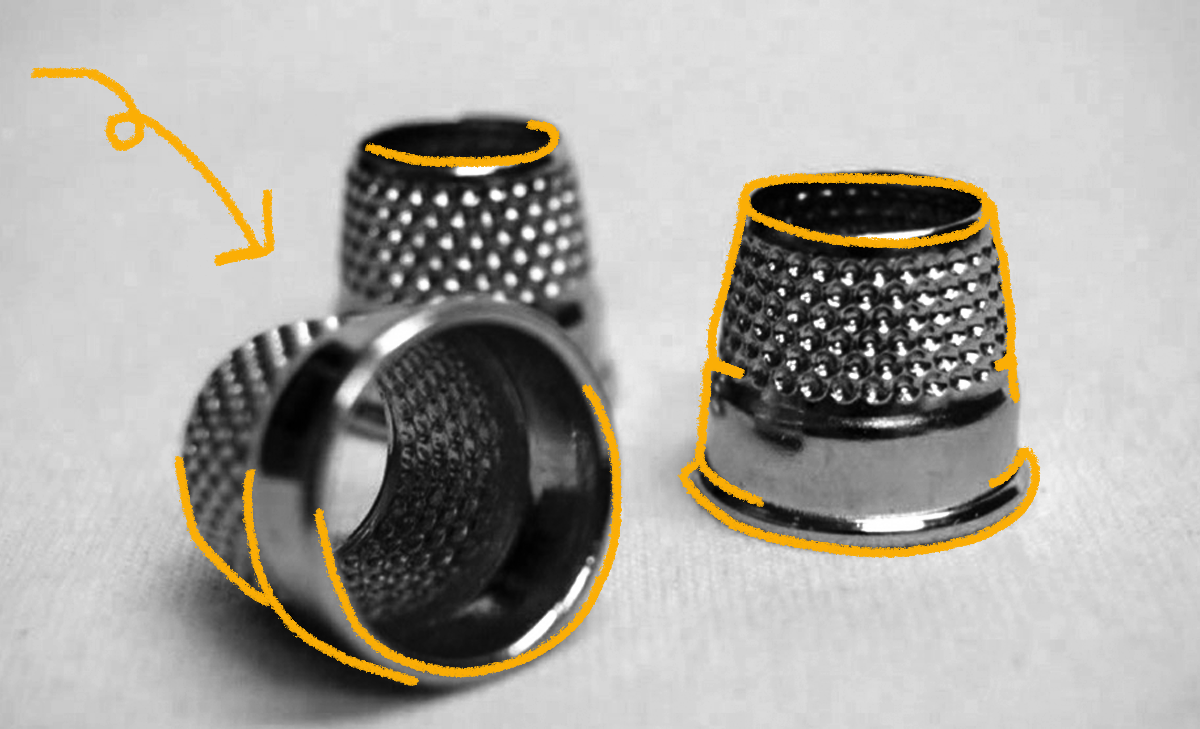Thimbles are designed to help to protect fingertips while sewing. In their earliest form, thimbles date back to approximately 30,000 years ago, when mammoth hunters sewed decorations like pearls onto leather. Thimbles have been made from many different materials over the years, including metal, leather, rubber, glass, china, whale bone, and ivory. The modern thimble was invented in England in 1695 by a Dutch metal worker. At the time, it was called a “thumb bell” because it was shaped like a bell and most often worn over the thumb. After the Industrial Revolution, the size and shape of thimbles changed because they were no longer being made by hand. Earlier models were thicker and featured a dome on the top, while machine-made thimbles were thinner and featured a flatter top.
While their primary use was to protect the fingertips when pushing a needle through fabric or leather, thimbles were also used for a variety of other purposes. Women of the night used them to tap on windows and doors to announce their presence. In the 1800s, they were also used to measure spirits, giving rise to the saying, “just a thimbleful.” Today, thimbles are still used for sewing and have also become popular items to collect. People who collect thimbles are called digitabulists.



